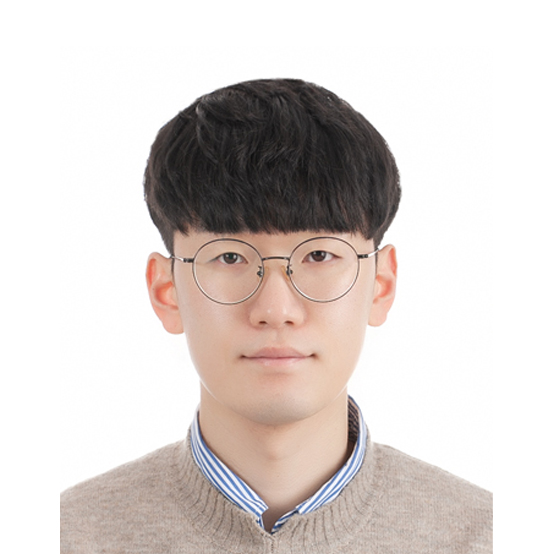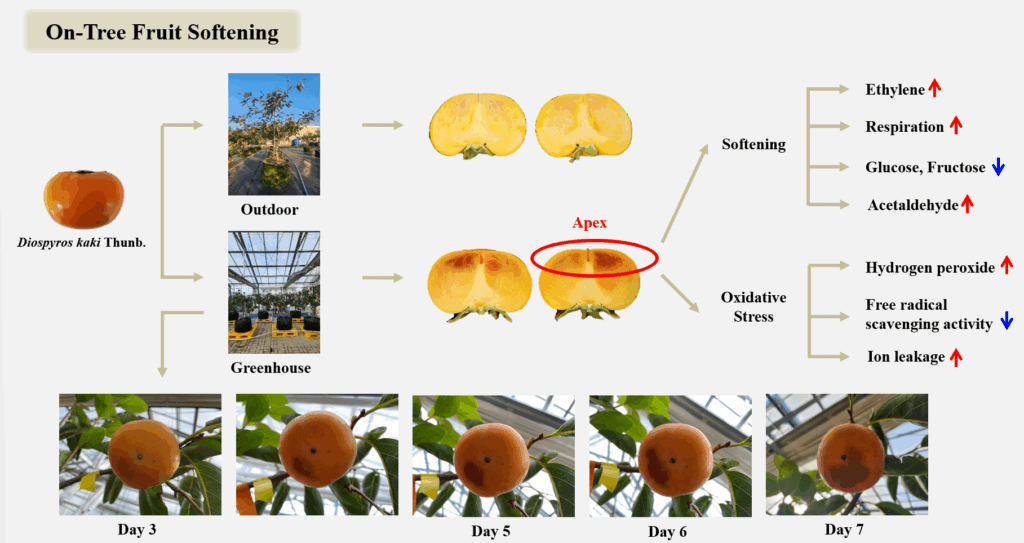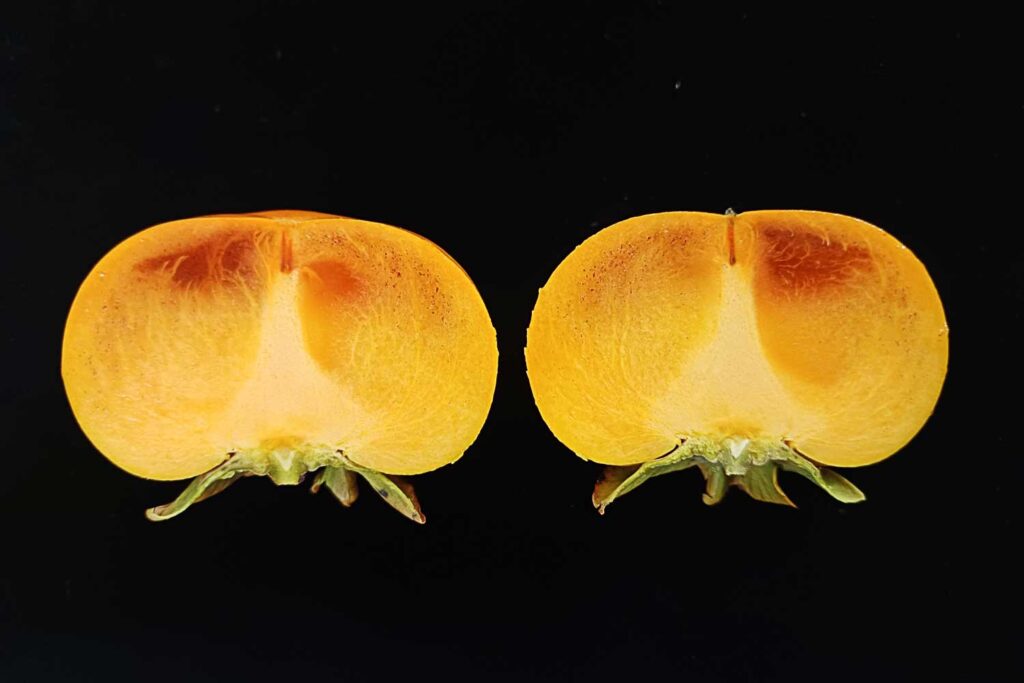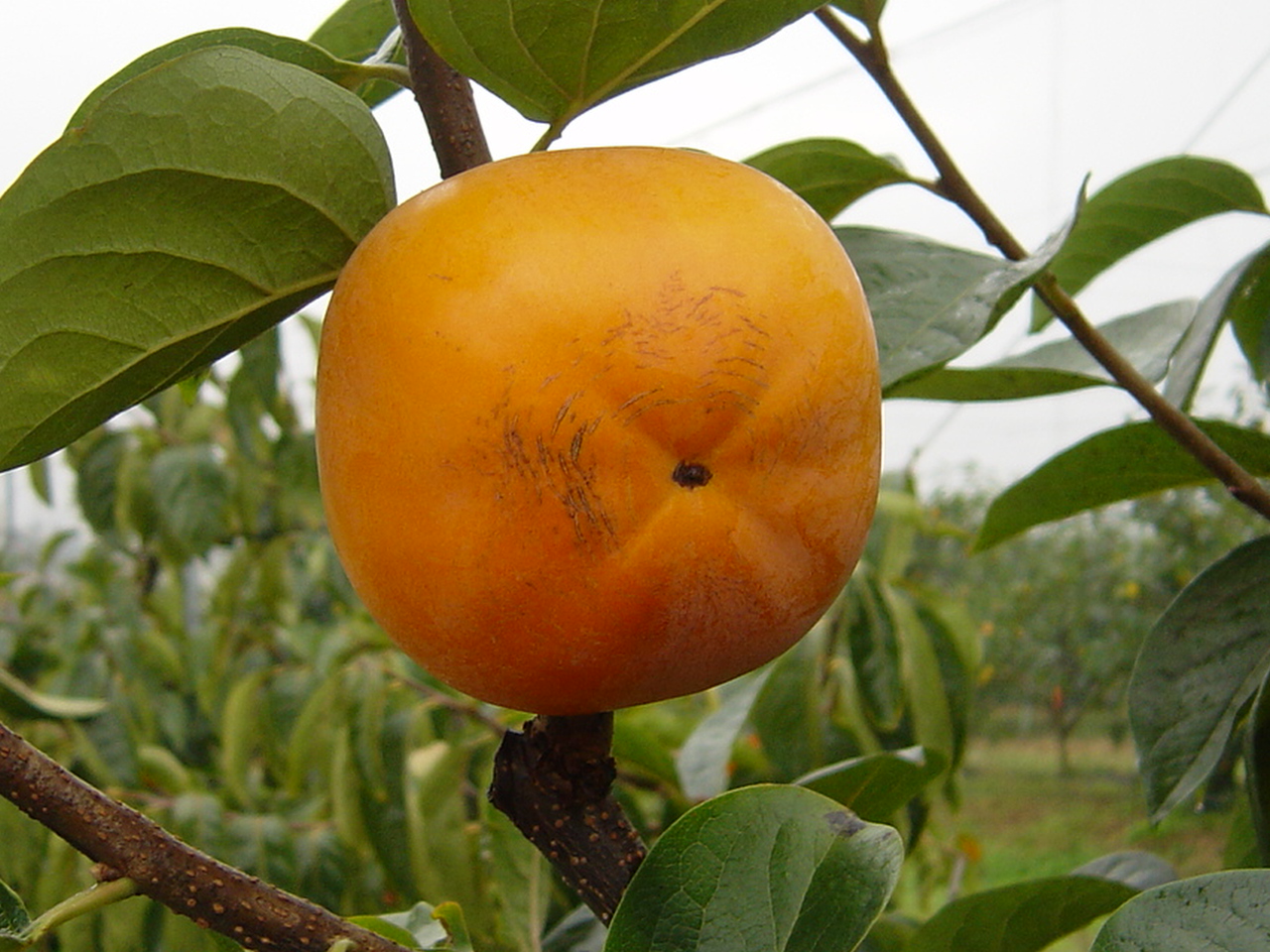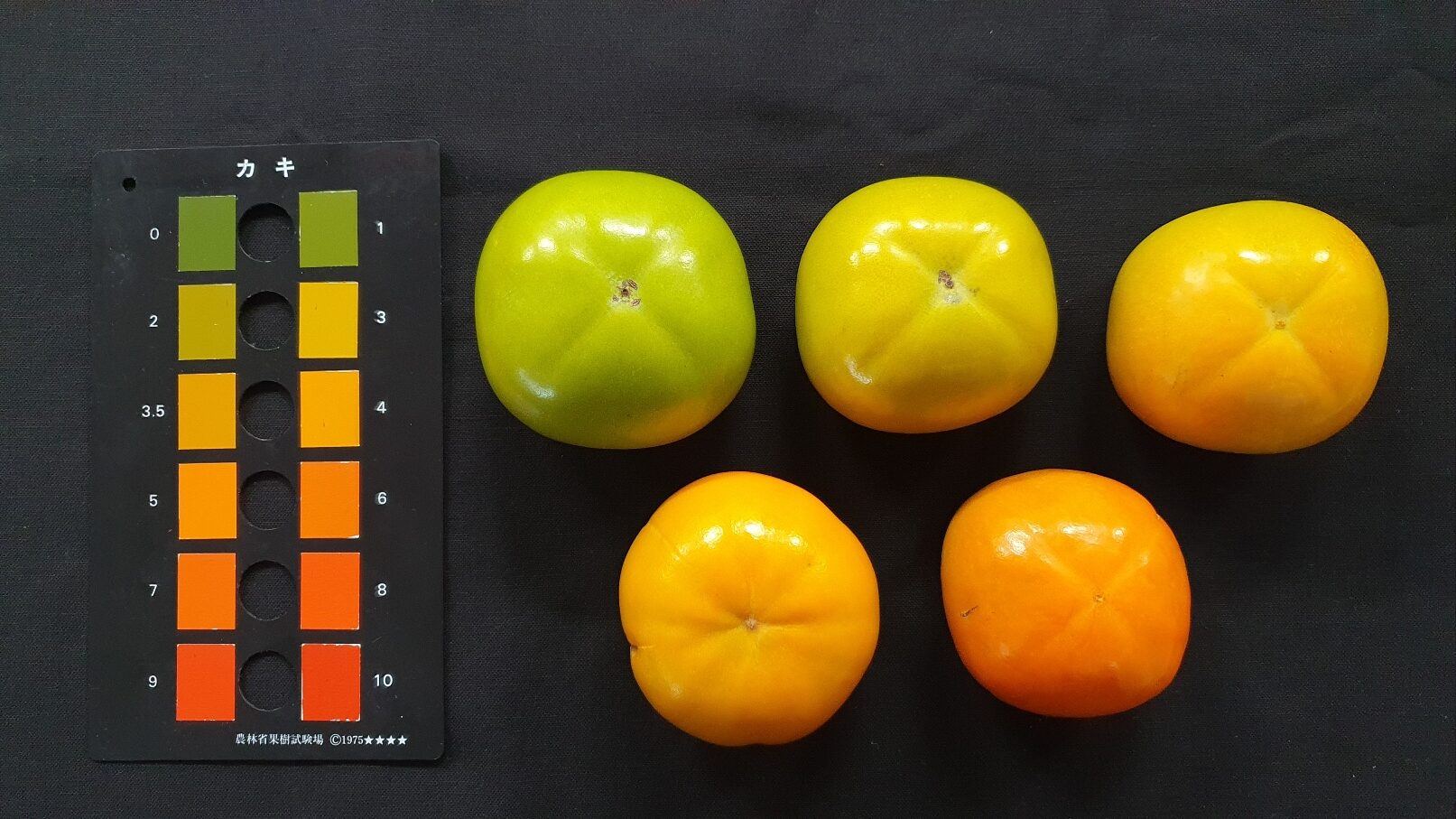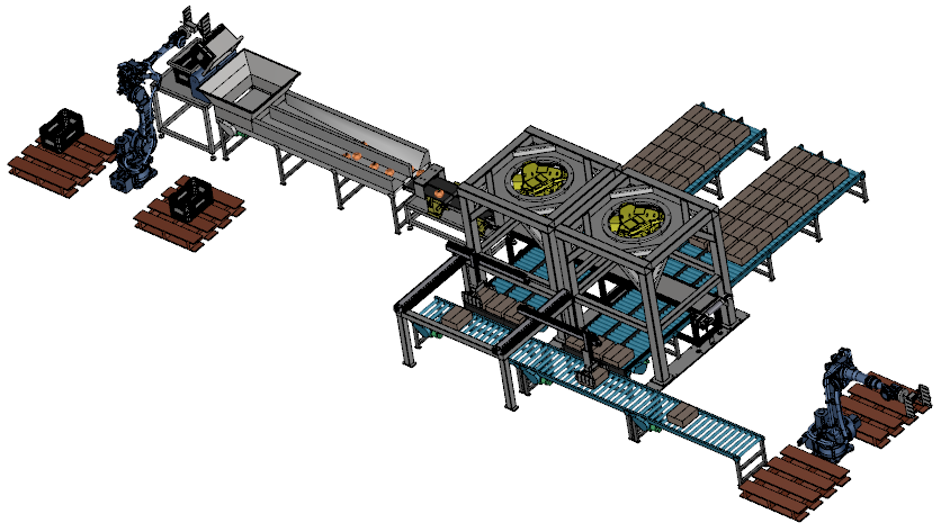김태엽
농업연구사
Taeyeup Kim is currently working as a researchcer at the Gyeongsangnam-do Agricultural Research and Extension Services (ARES) and pursuing a doctoral degree at the Fruit and Environmental Plant Physiology Laboratory, Gyeongsang National University. His current research focuses on sweet persimmons, and his main interests are plant physiology and metabolomics.
저는 경상남도농업기술원에서 농업연구사로 재직 중이며, 경상국립대학교 과수 및 환경식물생리학 연구실에서 박사과정을 수행하고 있습니다. 현재 단감을 대상으로 연구를 진행하고 있으며, 주요 관심 분야는 식물생리학과 대사체 분석입니다.
The main goal of my research is to lead the development of the sweet persimmon industry in the field of fruit tree physiology.
To this end, we are analyzing the causes of major physiological disorders in sweet persimmons and researching ways to alleviate them. This research will lead to the industrialization and development of Korea’s sweet persimmon industry.
Major physiological disorders of sweet persimmons include fruit softening, solar radiation damage, and physiological fruit drop. To study these, we are conducting Metabolomics studies using UPLC-QTOF-MS and GC-MS.
제 연구의 주요 목표는 과수 생리학 분야에서 단감 산업의 발전을 선도하는 것입니다.
이를 위해 단감의 주요 생리장해 원인을 분석하고 이를 완화할 수 있는 방법을 연구하고 있습니다. 이러한 연구는 산업화를 통해 대한민국 단감산업의 발전을 이끌 것입니다.
단감의 주요 생리장해로는 과실 연화, 일사 피해, 생리적 낙과 등이 있으며, 이를 연구하기 위해 UPLC-QTOF-MS 및 GC-MS를 이용한 Metabolomics 연구를 수행하고 있습니다.
On-Tree Fruit Softening
A New Physiological Disorder in Sweet Persimmon
Due to climate change, on-tree fruit softening (OTFS), previously not considered
a significant issue, is now emerging as a major problem in sweet persimmon production. OTFS induced by high temperature stress initiates with the generation of ethylene from the apex, resulting in an increase in oxidative stress.
The impact of acetaldehyde on OTFS was also investigated, but it was found to have no effect. While it is well-established that ethylene is released from the calyx during the harvest of young persimmons, this study reveals that the predominant source of ethylene in OTFS is actually the apex, rather than the calyx.
Distinguished from PHFS, OTFS is anticipated to pose a significant risk to fruit production as global warming worsens.
수상연화
단감의 새로운 생리장해
기후 변화로 인해 단감에서 문제가 되지 않았던 수상연화가 이제 주요 문제로 부상하고 있습니다.
고온 스트레스에 의해 유발된 OTFS는 정부에서 에틸렌이 생성되면서 시작되며, 이는 산화 스트레스 증가로 이어집니다.
아세트알데히드가 OTFS에 미치는 영향도 조사되었지만, 영향이 없는 것으로 나타났습니다. 어린 단감을 수확할 때 꽃받침에서 에틸렌이 방출된다는 것은 잘 알려져 있지만, 본 연구는 수상연화에서 에틸렌의 주요 발생원이 꽃받침이 아닌 정부임을 밝혀냈습니다.
수확후 연화와 구별되는 수상연화는 지구 온난화가 심해짐에 따라 과수 생산에 중대한 위험을 초래할 것으로 예상됩니다.
Mitigation of Physiological Disorders in Persimmon Using CPPU
‘Taishu’ is a cultivar preferred by consumers for its crisp texture, and its cultivation area has been increasing. Nevertheless, it has drawbacks such as severe fruit drop and a high incidence of contaminated fruits.
CPPU is regarded as a plant growth regulator that can address these problems.
Studies are being carried out to examine the effects of CPPU on persimmons, focusing on treatment methods that include application timing and concentration.
CPPU를 활용한 단감 생리장해 경감
태추는 아삭한 식감으로 소비자들에게 선호받는 품종으로 재배 면적이 늘고 있으나, 낙과와 오염과 발생이 심하다는 단점이 있다.
CPPU는 이러한 문제를 완화할 수 있는 생장 조절제로 평가되고 있다.
현재 CPPU의 처리 시기와 처리 농도 등을 포함한 처리 방법과 단감에 미치는 영향에 대해 연구하고 있다.
Development of Smart Agricultural Products Processing Complex (APC) Technology for Sweet Persimmon using a Robot Arm
A robotic arm-based persimmon sorter is a device that automates the sorting process of persimmons using advanced technology.
It utilizes vision cameras to identify the size and color of persimmons for sorting, while simultaneously minimizing damage during the loading and unloading process using shape-memory grippers.
This technology can significantly contribute to reducing labor and enhancing productivity in the agricultural sector.
로봇팔 이용 단감 스마트 APC 기술개발
로봇팔을 이용한 단감 선별기는 고도의 기술을 활용하여 단감의 선별 과정을 자동화하는 장치입니다.
비전 카메라를 활용하여 단감의 크기와 색상을 식별하여 선별하는 동시에, 형상 기억 그리퍼를 활용하여 단감의 로딩 및 언로딩 과정에서 손상을 최소화할 수 있습니다.
이 기술은 농업 분야에서 노동력을 절감하고 생산성을 향상시키는 데 크게 기여할 수 있습니다.
